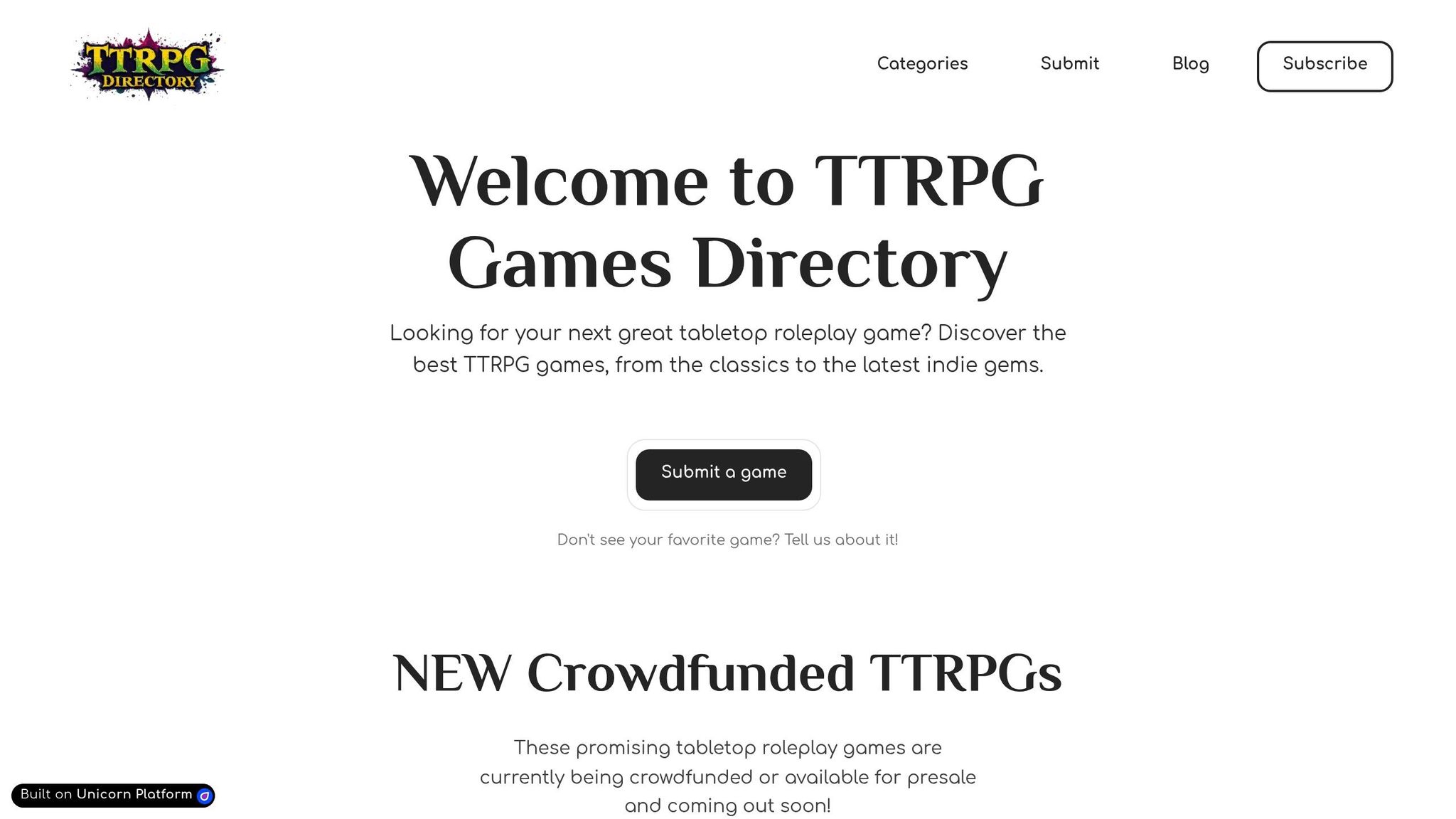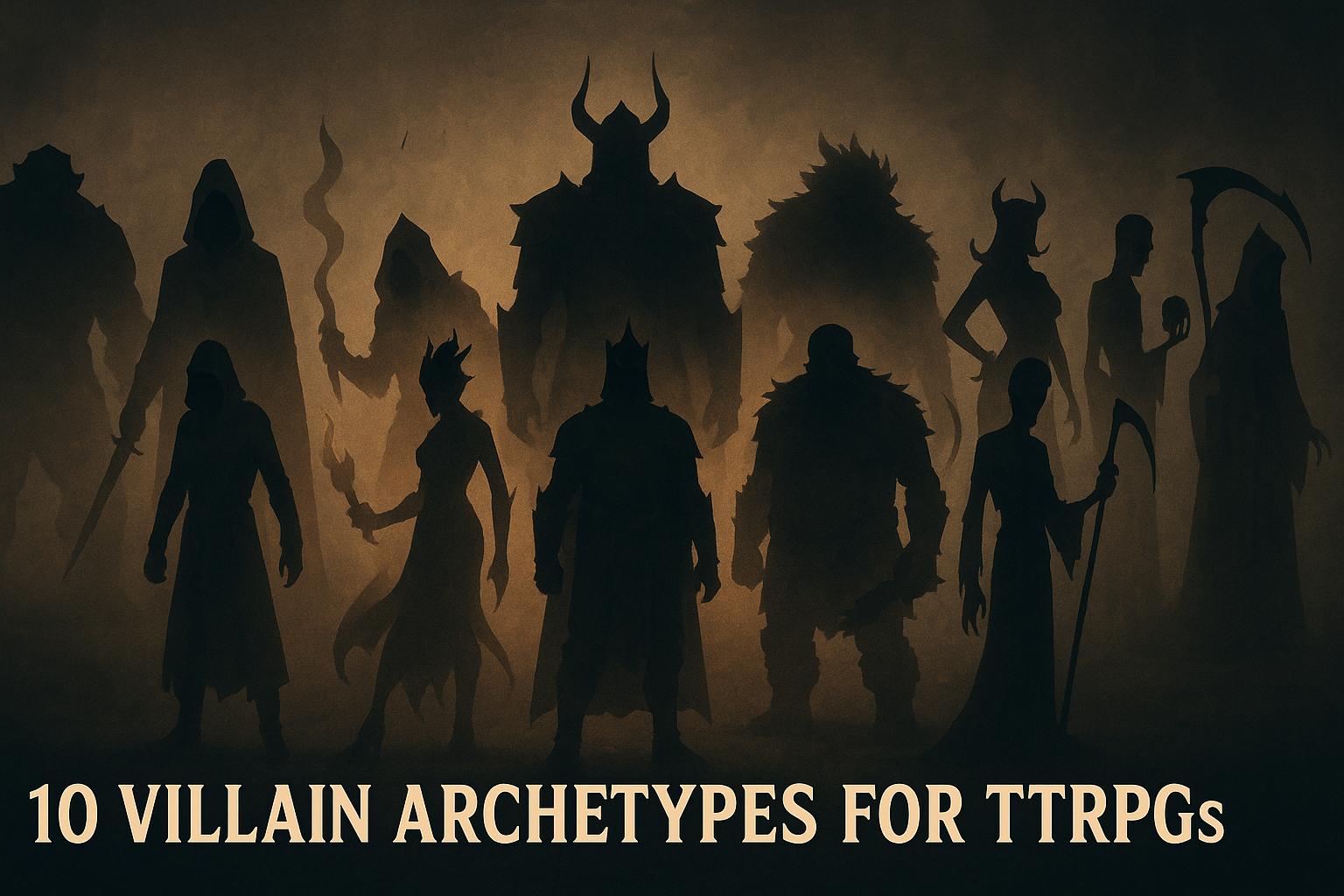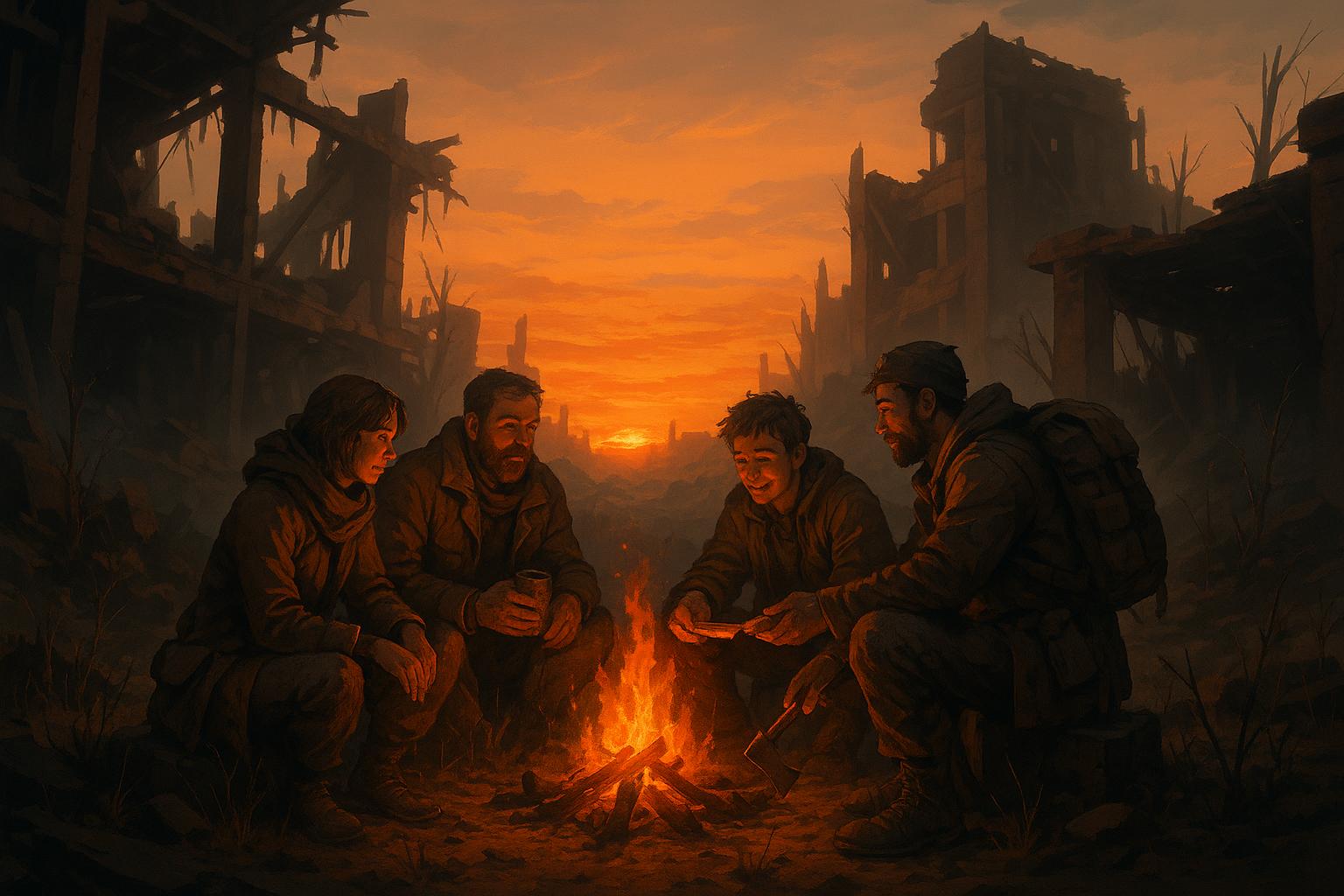Struggling to keep your RPG sessions smooth and engaging? Here's the quick fix: RPG session flow is all about managing pacing, player engagement, and session structure. When these elements break down, your game can feel slow, rushed, or disjointed.
Key Takeaways:
- Pacing: Avoid dead space or overwhelming speed. Balance action and downtime.
- Player Engagement: Watch for signs like distractions, mechanical responses, or lack of teamwork.
- Session Structure: Use clear setups, developments, and resolutions with flexible transitions.
How to fix it:
- Spot problems early - look for disengaged players or pacing issues.
- Rotate challenges to match player preferences (combat, roleplay, puzzles).
- Use tools like "Stars and Wishes" for post-session feedback.
- Adjust pacing with time techniques (slow/abstract/real-time).
- Balance spotlight time to ensure everyone feels included.
How to Run an Engaging Session || DM Pacing pt. 2
How to Spot Session Flow Problems
Identifying when your session flow starts to falter requires a sharp eye for changes in rhythm and player behavior. These issues don’t always come with flashing red lights; instead, they often creep in through subtle shifts in energy, engagement, or pacing that can sap the momentum of your game.
Signs Your Pacing Is Off
Once you’ve nailed down the basics of session flow, the next step is spotting pacing problems. Poor pacing can make scenes feel either sluggish or rushed. One major red flag is dead space - those moments where nothing meaningful happens, leaving players with little to engage with. A good rule of thumb: minimize the time between meaningful choices as much as possible.
When pacing drags, players might get stuck overthinking trivial decisions, leading to scenes that feel hollow or unimportant. Long, drawn-out conversations about minor details can also signal player fatigue, suggesting the need for more dynamic or engaging moments.
On the flip side, pacing that’s too fast can overwhelm players. If you’re throwing back-to-back combat encounters or speeding through critical story beats without giving players time to process, the game can quickly feel exhausting.
Interruptions can also wreak havoc on pacing. Things like frequent rule lookups, unclear descriptions that need constant clarification, or even technical glitches can break the flow and leave the session feeling disjointed.
When Players Lose Interest
Disengagement doesn’t always hit like a ton of bricks - it often starts small. You might notice players checking their phones more often or slipping into off-topic conversations during gameplay. If attendance starts to drop or players cycle in and out of the group frequently, it could point to deeper engagement issues.
Another telltale sign is a shift in how players interact. If they go from roleplaying enthusiastically - speaking in character and describing their actions vividly - to just giving mechanical responses like "I attack" or "I persuade", it may mean the game isn’t holding their attention anymore. Lack of teamwork, frequent arguments, or disputes with the GM are other indicators that something isn’t clicking.
"Simply asking your players if they had fun usually doesn't work because most people will say 'yes' even if they didn't have fun." - Luke Hart
You might also notice a lack of pre- or post-game chatter. If players aren’t discussing the session or seem eager to rush through content, it could signal that parts of the game are falling flat. These lapses in engagement often point to deeper structural issues in the session.
Finding Weak Points in Session Structure
When the core building blocks of your game - known as Play-Units - start to break down, the entire session can suffer. A strong session structure relies on smooth and effective exchanges that keep the game moving forward. If these exchanges falter, the session risks grinding to a halt.
One key area to watch is the flow of information. If players frequently ask questions like "What can we do here?" or "I don’t know what my character would want to do", it could mean they’re not getting enough actionable details to make meaningful decisions.
Session endings are another critical point to evaluate. Ideally, sessions should wrap up with satisfying story beats - whether it’s a victory, a twist, or a new challenge. If sessions are regularly ending mid-scene or feel rushed due to time constraints, it might be time to rethink your pacing and structure.
Transitions between major scenes can also reveal structural weaknesses. Awkward or abrupt transitions, as well as narrative gaps, can disrupt the flow and leave players feeling unmoored. Striking a balance between different gameplay elements - like combat, exploration, and social interaction - can help keep everyone engaged. Focusing too heavily on one aspect may leave some players feeling left out.
Lastly, frequent rules disputes can be a sign of deeper problems. While occasional clarifications are normal, constant arguments over rules may point to broader issues with pacing, difficulty levels, or narrative direction.
The key to addressing structural problems lies in recognizing when the natural rhythm between the GM and players starts to break down. By paying close attention to these moments, you can fine-tune your sessions and keep the game running smoothly.
Core Methods for Better Session Flow
Once you’ve pinpointed common flow issues, it’s time to focus on strategies that create smoother, more engaging gameplay. These methods tackle the problems head-on, helping you refine and improve the dynamics of your sessions.
Building a Balanced Session Framework
A well-structured session typically follows three key phases: setup, development, and resolution. This approach not only gives your session a clear structure but also helps address flow disruptions.
- Setup: This phase hooks players right away, drawing them into the story.
- Development: The heart of the session, where players dive into challenges, roleplay, and explore the narrative. This phase usually takes up most of the session’s time.
- Resolution: This wraps up the major events - whether it’s defeating a foe, solving a mystery, or uncovering a new storyline. The resolution provides closure without needing to address every single subplot.
To prepare effectively, plan for 3–4 accessible locations in a 4–6-hour session. For each location, design 3–4 distinct NPCs with clear traits and hidden secrets. Incorporate flexible "Secrets and Clues" to keep the narrative moving smoothly.
Adjusting Pacing During Gameplay
Good pacing is all about managing the energy at the table. Pay attention to how players are reacting - are they engaged, restless, or overwhelmed? If the energy dips during roleplay, introduce a combat scenario or a sudden environmental challenge to reignite interest. On the flip side, if the action feels too relentless, slow things down with moments of character development or exploration.
You can also use description length to control pacing. Detailed descriptions allow players to absorb the scene, while shorter ones create urgency. If you need to speed things up, introduce time pressure, heightened stakes, or significant consequences. To slow things down, ease up on the tension and let players reflect. The "scene and sequel" method works well here: active scenes filled with challenges are followed by quieter moments for reflection and planning.
Refine pacing further by using time manipulation techniques:
- "Now time": Real-time interactions for immediate moments.
- "Slow time": Focused attention on critical events.
- "Abstract time": Skipping over less important moments.
Making Smooth Scene Transitions
Shifting between combat, roleplay, and exploration should feel natural, not forced. A flexible, collaborative storytelling approach makes transitions seamless. Try using improvisational techniques like "Yes, And" to build on player input and keep the flow going. For example, instead of abruptly announcing combat, describe how the atmosphere shifts - maybe the room grows darker, tensions rise, or NPCs react to a sudden threat.
Be ready to adapt. If players veer off into an unexpected conversation or explore a side path, let the story evolve organically instead of pushing them back onto a predetermined track. Mistakes or unexpected choices can often lead to richer, more dynamic moments.
Subtle sensory cues - like changes in music, lighting, or even your tone - can signal transitions without breaking immersion. Treat these moments as opportunities for collaborative storytelling, making the shift between phases feel like a natural part of the narrative rather than a mechanical step. This approach ensures the session flows smoothly from one scene to the next.
sbb-itb-b8b00a5
Player-Focused Troubleshooting Methods
Keeping RPG sessions smooth and engaging often requires more than just structural tweaks; it means paying close attention to each player’s unique style and contributions. By tailoring your approach to individual preferences, you can create a more dynamic and enjoyable experience for everyone at the table.
Matching Challenges to Player Preferences
Understanding what excites each player is essential for maintaining energy and engagement. Some players light up during tactical combat, while others come alive during roleplay or puzzle-solving. Rotating challenges to match these preferences can keep everyone involved.
Start by observing how players react to different encounters. For instance, if someone is animated during social interactions but seems to zone out during combat, you’ve identified what resonates with them.
"Each player at your table is unique, with their own wants and desires for how much attention they want and the kind of moments they enjoy. The key is ensuring that everyone feels fulfilled, even if that spotlight time looks different." – Bjarke the Bard
For quieter players, use “highlight questions” to draw them back into the action. If they seem disengaged, ask how their character reacts to the current situation. Additionally, design encounters that cater to various strengths. For example, a combat scenario with dynamic terrain might appeal to a tactical thinker, while a morally complex negotiation could captivate a roleplaying enthusiast. Rotating these moments ensures no single player dominates the session, keeping the experience balanced and engaging.
Fixing Group Dynamic Problems
While it’s important to cater to individual preferences, group dynamics play an equally critical role in session flow. When one player dominates or others feel sidelined, the overall energy at the table can take a hit.
Pay attention to imbalances in spotlight time. If some players seem quieter or less involved, it might indicate a shift in engagement. These changes can be subtle, so regular check-ins are crucial to address issues before they escalate.
If a player is overpowering the group, consider having a direct, private conversation with them.
"The most constructive way to address overbearing players is to talk to them outside of the game. Clear, direct communication can often resolve these issues better than any in-game strategies." – Bjarke the Bard
To ensure everyone gets their moment, you might use structured spotlight sharing. This could involve temporarily splitting the party or cycling through players so each has a chance to lead. Tools like Session Zero and periodic check-ins can also help set expectations and maintain a balanced dynamic throughout your campaign.
Getting Players to Help Tell the Story
Once you’ve balanced individual challenges and group dynamics, the next step is encouraging players to actively contribute to the narrative. When players help shape the story, they become more invested, which naturally enhances the session’s flow. The trick is to encourage participation without letting any one player dominate.
Invite players to describe their character’s actions or how they enter a scene. This gives them a sense of ownership while keeping the story cohesive. You can also prompt them to expand on their backstories, which adds depth to the world-building.
During key moments - like a combat victory or a successful skill check - ask questions like, "How do you want to do this?" This gives players the chance to narrate their triumphs in their own words, creating memorable, high-energy moments.
At the same time, it’s important to balance player agency with a clear narrative structure. While open-ended play can be exciting, it risks stalling the session if left unchecked. Provide a framework where player choices have meaningful consequences, but still guide the story forward. Incorporating player-created elements into future sessions validates their input and deepens their connection to the campaign.
Advanced Tools for Long-Term Session Flow Management
Once you're comfortable with the basics of session flow troubleshooting, it's time to explore advanced tools and strategies for managing flow across multiple sessions and campaigns. These approaches help you identify recurring patterns, learn from past experiences, and make systematic improvements over time. By applying these methods, you can create a foundation for smoother, more consistent gameplay.
Using Post-Session Reviews to Improve Flow
Post-session reviews can be a game-changer for refining session flow over the long haul. A popular and effective approach is the "Stars and Wishes" technique. Here's how it works: Ask players to highlight the moments they enjoyed the most (their "stars") and then share ideas for what could be improved or added in future sessions (their "wishes"). This method strikes a balance between celebrating successes and gathering constructive feedback.
After each session, take time to review your notes and reflect on how things went. Were players engaged throughout? Did the pacing feel right? How did your facilitation strategies hold up? Document what worked well and what didn’t, so you can build on your successes and address any weak spots in future sessions.
Tracking Flow Patterns Across Campaigns
While post-session reviews provide immediate feedback, looking at patterns across multiple sessions offers deeper insights. Start by outlining key story beats and pacing considerations before each session. Breaking your campaign into clear story arcs ensures that important moments are well-placed and helps you analyze how the narrative evolves over time.
To keep things engaging, aim for variety in your sessions. Avoid falling into a routine by mixing up combat scenarios, roleplaying opportunities, and skill challenges. This keeps gameplay dynamic and prevents it from becoming predictable. Pay attention to which scenes tend to drag or end too quickly, and use that information to make real-time adjustments or refine your pacing in future sessions.
Using TTRPG Games Directory for System Compatibility

Sometimes, flow issues arise because the game system doesn't quite match your group's playstyle. The TTRPG Games Directory can be an invaluable resource for finding systems that better align with your group's preferences. This directory provides detailed descriptions of various game systems, including their mechanics, themes, and unique features.
For example, if tactical combat feels like it’s slowing things down or social encounters seem overly complicated, consider exploring systems with more streamlined mechanics or ones that emphasize collaborative storytelling. Choosing a game system that naturally supports the type of gameplay your group enjoys can help minimize flow problems and create a more seamless experience from the start.
Conclusion: Key Points for Smooth RPG Sessions
Keeping an RPG session running smoothly boils down to a few critical practices: spotting issues early, applying effective strategies, prioritizing player engagement, and refining your approach with advanced tools.
Pay attention to early warning signs like uneven spotlight time or pacing that drags - these are clear indicators that adjustments are needed. Addressing these promptly can prevent bigger disruptions later.
When problems arise, lean on a solid set of strategies. Build a balanced session structure that includes a mix of activities to keep things dynamic. Alternate between fast-paced and slower moments to maintain interest, and start every session with a strong hook to draw players in right away.
Make sure challenges align with your players' interests and balance group dynamics to ensure everyone feels engaged and rewarded. This ties back to the structured approach mentioned earlier and helps create a more cohesive experience.
Focus on meaningful decision points. As Novak, an RPG enthusiast, puts it: “Your goal is to abstract to the interesting decision point, and no further”. Skip over mundane details and zero in on the moments that matter most, much like a movie director crafting a compelling scene.
Keep communication open about pacing and expectations, and consider wrapping up sessions a little earlier than planned. This leaves players excited and eager to return for the next one.
For long-term success, track what works for your group. Post-session reviews can reveal patterns and highlight areas for improvement. If flow issues persist, evaluate whether the game system suits your group’s style using resources like the TTRPG Games Directory. Remember, flexibility is key - what clicks for one group might not work for another. Even seasoned Game Masters are always fine-tuning their methods, so be open to experimenting and adapting to create the best experience for everyone at the table.
FAQs
How can I tell if my RPG session pacing is too fast or too slow?
If you're wondering whether the pacing of your RPG session feels off, start by observing your players. Are they looking distracted, frustrated, or struggling to make meaningful choices? That could mean things are moving too fast. On the flip side, if they seem bored, disengaged, or keep asking to skip ahead, the pacing might be dragging.
To fine-tune the flow, kick off your session with something exciting to grab their attention. Then, mix in high-energy moments with quieter, more reflective scenes to keep the experience balanced and engaging. It’s also a good idea to check in with your players regularly - this helps ensure the session's rhythm aligns with their expectations and keeps everyone immersed in the story.
How can I re-engage players who seem uninterested during a tabletop RPG session?
To bring disengaged players back into the fold, consider a few straightforward yet impactful approaches. Start by directly involving them in the narrative - pose questions like, "What’s your character thinking right now?" or "How are they reacting to this situation?" This simple step can draw their attention and encourage active participation.
Another way to rekindle interest is by weaving elements from their character’s backstory into the storyline. When the plot touches on personal stakes, it feels more connected and meaningful to them. You could also create new NPCs or events that align with their character’s ambitions or motivations - this can spark curiosity and renew their investment in the game.
These small tweaks can make the session more immersive and collaborative for everyone at the table, creating a richer experience for the group.
How can I make sure every player gets a fair share of attention during a tabletop RPG session?
Balancing attention in a tabletop RPG is crucial to making sure everyone feels engaged and appreciated. Pay close attention to how the group interacts - if some players tend to take over while others remain quiet, gently invite the quieter ones to contribute. You can do this by asking them directly for their thoughts or by weaving moments into the story that naturally put their characters in the spotlight.
A good way to maintain fairness is to rotate the focus during key scenes or spread narrative attention evenly among players. Another helpful approach is to address this during Session Zero - the initial meeting where players can discuss their preferences, including how much spotlight time they’re comfortable with. This helps set the tone for a more inclusive and enjoyable experience for everyone at the table.


